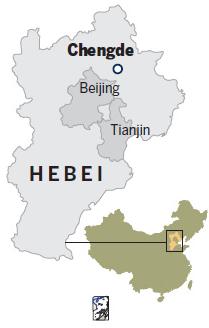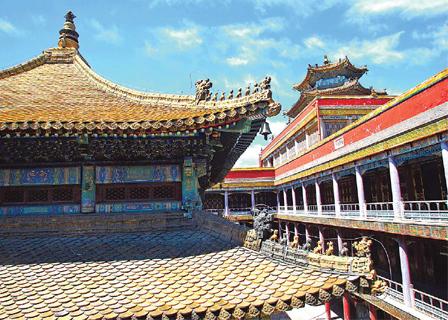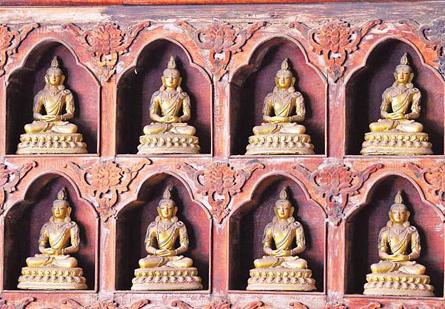In the footsteps of emperors
|
|
|
The gilt-roofed Wanfa Guiyi Palace in the World Cultural Heritage-listed Eight Outer Temples in Chengde, Hebei province. [Zou Hong/China Daily] |
|
|
|
Buddha statues in the Eight Outer Temples in Chengde. |
Chengde Mountain Resort was a holiday retreat of China's last emperors. They avoided Beijing's stifling summer heat in palaces nestled in its cool, green hills.
Chengde is a small and picturesque city around two-hour's drive from Beijing. Here, Qing Dynasty (1644-1911) emperors built a summer palace as an imperial retreat for the rulers and their courts to flee the heat of summer every year. These days, it's a place where tourists, day-trippers and history buffs can get a taste of the imperial lifestyle and collect amusing anecdotes about these historic characters.
The resort was built by the Emperor Kangxi about 300 years ago. In those days, the royal court would have to make the one-week journey to Chengde using porters, sedans and horse-drawn carriages in a royal caravan known as luan jia. They would have envied the modern-day backpacker, who makes the trip in mere hours.

These days, the 250-km distance from Beijing has been compressed to a two-hour expressway bus ride or around four hours by train. Soon, tourists will be able to look forward to an inter-city bullet train that will reduce the traveling time to just 40 minutes.
On the bus-ride to Chengde, I took out a guide book to review the history of this unique retreat. It was often called the "second capital", since some of the Qing emperors spent almost six months each year here.
It was once an unknown city lying in the northeast of Hebei province until it was picked as the place to escape the summer heat and a way of reducing the risks of smallpox, which the Manchurian rulers regarded as the worst plague.
Emperor Kangxi started the construction in 1703, but it took 89 years and the reign of three emperors for the grand project to finish. The finished retreat spanned 5.64 million square meters and included three sections: mountain, lake and the plains.
Most visitors attracted to Chengde by its reputation may expect to escape the hustle and bustle of the big cities. They may be disappointed because the place is always packed with local and foreign sight-seers in the peak season.
On the Internet, veteran visitors have jokingly posted: You don't need to hire a guide at Chengde. Everywhere you go, there'll be guides speaking into microphones, followed by groups of tourists wearing identical caps printed with the travel agencies' names.
The best way to enjoy the ancient architectural complex is to stay in hotels near or in the resort. It may cost you more but the convenience is worth the expenditure.
If possible, go to Chengde in the autumn, when the tourist season is already petering off but the natural beauty of the attractions is still untarnished by the winter frosts.
When sun slips down the mountains and the tourists go home, the royal retreat recovers its peace and tranquility. This is the best time to relax and look back at the resort's history.
The Seven Stars Lake looks like a fairyland in the early morning mist.
 0
0 









Go to Forum >>0 Comments